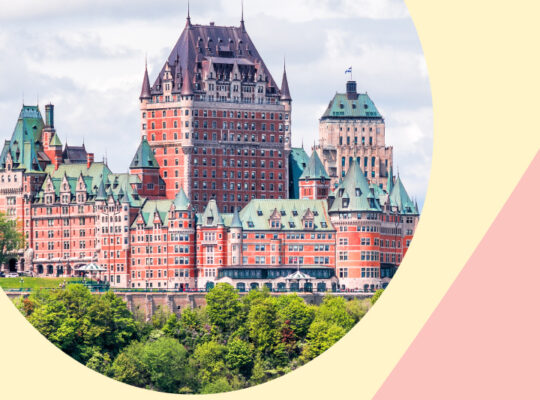Manitoba – Income Tax Brackets, Rates & Provincial Tax Credits
TurboTax Canada
January 21, 2025 | 3 Min Read
Updated for tax year 2025

The origins of the name Manitoba can be traced back to either the Algonquin Cree manitou-wapow or Ojibwe manidoobaa tribes. The meaning of the word translates to “the narrows of the Great Spirit.” This beautiful province has over 100,000 lakes and is a great place for outdoor activities.
Manitoba uses a progressive income tax structure, with only 3 tax rates or brackets. The tax brackets increase each year, based on inflation. Visit the government of Manitoba’s personal income tax page for yearly tax bracket rate updates.
Key Takeaways
- Manitoba uses a progressive income tax structure, with only 3 tax rates or brackets.
- Form MB428 is used to calculate Manitoba’s tax, as well as non-refundable tax credits.
- Your taxable income represents your total income minus federal deductions like the Registered Retirement Savings Plan (RRSP) deduction and child-care expenses.
Manitoba’s tax brackets for Tax Year 2025
| Tax rate | Taxable income threshold |
|---|---|
| 10.8% | on the portion of taxable income that is $47,564 or less, plus |
| 12.75% | on the portion of taxable income over $47,564 up to $101,200, plus |
| 17.4% | on the portion of taxable income over $101,200 |
How Manitoba’s tax brackets work
Under the current tax on income method, tax for all provinces (except Quebec) and territories is calculated the same way as federal tax. Form MB428 is used to calculate Manitoba’s provincial tax, as well as non-refundable tax credits.
Your taxable income represents your total income minus federal deductions like the Registered Retirement Savings Plan (RRSP) and child-care expenses. As its name implies, it’s the amount on which you pay income tax.
There’s an allowable amount of income that you can earn before you must start paying taxes. This is called the Basic Personal Amount, or BPA. For the 2025 tax year, the federal basic personal amount (BPA) is $16,129 while Manitoba’s amount is $15,780.
Income for determining your tax bracket is calculated by adding the sum of all income streams for the year, such as employment, self-employment, pension, saving plans, investments, benefits, and more, totalled on line 15000–Total Income, then subtracting applicable deductions. The result of this calculation, shown on line 26000–Taxable Income, is used to determine your tax brackets.
Manitoba’s provincial tax credits
Manitoba has a tax system similar to other Canadian provinces. Many of the Manitoba provincial taxes and credits complement similar credits at the federal level, but there are some unique credits for residents of Manitoba.
- The Homeowners Affordability Tax Credit which offers up to $1,500 to help manage education property taxes on principal residences.
- Primary Caregiver Tax Credit: Manitobans who act as the primary caregiver for a family member or friend for at least 90 days may be eligible for this refundable credit, up to $1,400. Note: This program requires pre-approval.
- Seniors’ School Tax Rebate: If you’re a senior over the age of 65, pay school taxes, and have an income lower than $63,500, you may qualify for this tax rebate. For 2025, if eligible, you’ll receive a rebate of up to $235.
- Fertility Treatment Tax Credit: Trying for a baby? This credit will allow you to claim 40% (up to a maximum of $8,000) of expenses incurred for the treatments/medications provided by a licensed medical practitioner or fertility treatment clinic in Manitoba.
- Manitoba Child Benefit: In addition to the federal Canada Child Tax Benefit (CCB), this is credited to those in a lower income bracket who are raising children.
- Green Energy Equipment Tax Credit: If you own property, you should consider installing a geothermal heat pump system, solar heating, gasification, or biomass fuel energy equipment to receive a tax credit—depending on the equipment or systems you install, you can get up to 15% credit.
For further information on tax rebates and credits for Manitoba, visit its tax assistance office page. For Canada’s federal tax rates, view this link from TurboTax.
File with confidence.
Related articles

© 1997-2024 Intuit, Inc. All rights reserved. Intuit, QuickBooks, QB, TurboTax, Profile, and Mint are registered trademarks of Intuit Inc. Terms and conditions, features, support, pricing, and service options subject to change without notice.
Copyright © Intuit Canada ULC, 2024. All rights reserved.
The views expressed on this site are intended to provide generalized financial information designed to educate a broad segment of the public; it does not give personalized tax, investment, legal, or other business and professional advice. Before taking any action, you should always seek the assistance of a professional who knows your particular situation for advice on taxes, your investments, the law, or any other business and professional matters that affect you and/or your business.









